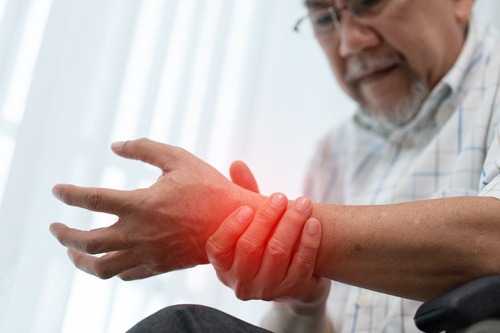Car accidents are an unfortunate reality that millions of people face every year, often resulting in a wide range of injuries, from minor bruises to life-altering conditions. Understanding common car accident injuries is crucial for victims and their loved ones to navigate the aftermath of such incidents effectively. Injuries can vary widely depending on the severity of the collision, the vehicles involved, and the circumstances of the crash.
In this blog, we’ll explore common car accident injuries, their symptoms, treatment options, and the importance of seeking immediate care from an experienced car accident doctor in Atlanta for effective recovery.
Traumatic Brain Injuries (TBI)
Traumatic brain injuries (TBI) occur when a sudden impact or jolt causes damage to the brain. This type of injury can result from various car accident scenarios, such as a collision, sudden stops, or even the violent shaking of the head. The force of the impact can lead to bruising, bleeding, or tearing of brain tissue. Common causes of TBIs in car accidents include hitting the steering wheel, windshield, or other objects inside the vehicle.
Symptoms and Their Onset
Symptoms of a TBI can vary widely based on the severity of the injury. They may appear immediately after the accident or develop over time. Common signs include headaches, confusion, dizziness, nausea, and difficulty concentrating. In severe cases, victims may experience loss of consciousness, seizures, or even changes in behavior. Recognizing these symptoms early is crucial for effective treatment and recovery.
Challenges in Diagnosis and Treatment Options
Diagnosing a TBI can be challenging, as symptoms may not always be apparent right away. Medical professionals often rely on imaging tests, such as CT scans or MRIs, to assess the extent of the injury. Treatment options depend on the severity of the TBI. Mild cases may require rest and monitoring, while more severe injuries could necessitate surgery or rehabilitation therapy. It’s essential for victims to seek immediate medical attention after an accident, as prompt diagnosis and treatment can significantly improve outcomes and reduce the risk of long-term complications.
Spinal Cord Injuries
Spinal cord injuries (SCIs) are among the most serious outcomes of car accidents. These injuries can have a profound impact on mobility and overall quality of life. Understanding the implications of SCIs is essential for both victims and their families.
Impact on Mobility and Quality of Life
An injury to the spinal cord can lead to partial or complete loss of movement and sensation below the site of the injury. This can result in paralysis, which may be classified as either paraplegia (affecting the lower body) or quadriplegia (affecting all four limbs). The severity of the injury often dictates the level of impairment. Many individuals face significant lifestyle changes, requiring assistance with daily activities and rehabilitation.
Symptoms and Immediate Medical Care
Symptoms of spinal cord injuries can vary widely. Common signs include:
- Loss of movement
- Numbness or tingling in the extremities
- Difficulty breathing or coughing
- Loss of bladder or bowel control
If you suspect a spinal cord injury after an accident, it is crucial to seek medical attention immediately. Delaying treatment can exacerbate the injury and lead to further complications.
Treatment and Rehabilitation
Treatment for spinal cord injuries typically begins in the emergency room. Initial care may involve stabilizing the spine and preventing further injury. Following this, a comprehensive rehabilitation program is often necessary. Rehabilitation can include physical therapy, occupational therapy, and counseling to address both physical and emotional challenges.
Internal Injuries
Car accidents can lead to various internal injuries, which may not be immediately visible but can have serious consequences. These injuries often involve damage to vital organs such as the heart, lungs, liver, and kidneys. Understanding the types of internal injuries and their potential risks is essential for anyone involved in a vehicle accident.
Types and Potential Risks
Internal injuries can vary widely in severity. Common types include:
- Internal bleeding: This can occur when blood vessels are damaged, leading to blood pooling in the abdomen or other areas. Internal bleeding can be life-threatening if not treated promptly.
- Organ lacerations: Sharp objects or forceful impacts can cause cuts or tears in organs. These injuries may require surgical intervention to repair.
- Contusions: Bruising of internal organs can result from blunt force trauma, leading to pain and dysfunction.
The risks associated with these injuries can escalate quickly, making it crucial to seek medical attention right away.
Recognizing Symptoms and the Importance of Immediate Medical Attention
Many symptoms of internal injuries may not appear until hours or days after the accident. Common signs to watch for include:
- Abdominal pain or swelling
- Dizziness or fainting
- Nausea or vomiting
- Changes in consciousness
If you experience any of these symptoms after a car accident, it’s vital to seek medical attention immediately. Early detection and treatment can significantly improve outcomes and reduce the risk of complications.
Long-term Health Implications
Internal injuries can lead to long-term health issues, such as chronic pain, organ dysfunction, or even permanent disability. Survivors of severe internal injuries may face ongoing medical treatment and rehabilitation. Understanding these potential long-term effects is essential for car accident victims as they navigate their recovery and consider their legal options. Seeking professional medical and legal guidance can help ensure that victims receive the support they need for a successful recovery.
Soft Tissue Injuries
Soft tissue injuries are among the most common outcomes of car accidents. They can occur in various forms, often resulting from sudden impacts and jolts during a collision. Understanding these injuries is essential for both prevention and recovery.
Whiplash and Neck Strains: Causes and Effects
Whiplash is a prevalent soft tissue injury that typically occurs when the head is forcibly thrown backward and then forward. This sudden motion can strain the neck muscles, leading to pain and stiffness. Symptoms often develop within 24 hours and may include headaches, dizziness, and reduced range of motion. Neck strains can also result from similar forces and can lead to chronic discomfort if not treated properly.
Other Common Soft Tissue Injuries
Apart from whiplash, other common soft tissue injuries include sprains and strains in various parts of the body, such as the back, shoulders, and knees. These injuries can arise from the sudden impact of a crash, causing ligaments and tendons to stretch or tear. Symptoms often include swelling, bruising, and pain during movement. It’s crucial to recognize the signs early to prevent further complications.
Treatment and Recovery Process
The treatment for soft tissue injuries often involves rest, ice, compression, and elevation (RICE). Physical therapy may also be recommended to restore strength and flexibility. In some cases, medications such as anti-inflammatories can help alleviate pain. Recovery times vary based on the severity of the injury, but with prompt medical attention and appropriate care, many individuals can return to their normal activities. However, it’s essential to follow a healthcare provider’s recommendations closely to ensure a full recovery and to minimize the risk of long-term issues.
Fractures and Broken Bones
Car accidents often result in fractures and broken bones, which can lead to significant pain and long recovery times. Understanding the common types of fractures associated with vehicle collisions is essential for victims and their families.
Common Fracture Types in Car Accidents
In the context of car crashes, certain fractures are more prevalent. These include:
- Arm and Wrist Fractures: Often occur when drivers or passengers brace themselves during a collision.
- Leg and Ankle Fractures: Commonly seen in accidents where the lower body is impacted or crushed.
- Rib Fractures: Can result from seat belt injuries or the force of the steering wheel during a crash.
- Skull Fractures: May occur from head trauma against the dashboard or window.
Severity and Treatment Approaches
The severity of fractures can vary widely. Some may require only a cast, while others may necessitate surgery. Treatment approaches typically include:
- Immobilization: Using casts or splints to keep the bone in place during healing.
- Surgery: In cases of severe fractures, surgical intervention may be necessary to realign bones and insert hardware like plates or screws.
- Physical Therapy: Rehabilitation is often crucial for regaining strength and mobility after the initial healing phase.
Complications and Long-term Effects
Fractures can lead to various complications, including:
- Infection: Particularly in open fractures where the skin is broken.
- Chronic Pain: Some individuals may experience ongoing discomfort long after the fracture has healed.
- Reduced Mobility: Depending on the fracture’s location and severity, victims may face challenges in returning to their normal activities.
Seek Treatment For Your Car Accident Injuries From an Experienced Doctor ASAP!
If you or a loved one have been injured in a car accident, it’s crucial to take action to protect your health and well-being. At Georgia Spine & Orthopaedics, our dedicated team specializes in diagnosing and treating car accident injuries, from soft tissue damage to more severe conditions like spinal cord injuries and traumatic brain injuries.
Contact us at 678-929-4494 to schedule an appointment with us today!






